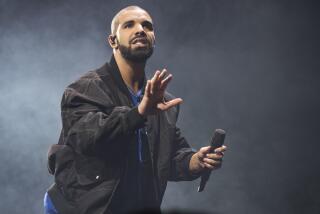Scientists Clone Banteng in Effort to Save Dying Species
- Share via
WASHINGTON — Stud No. 391 has been dead for 23 years. But last week the animal, a member of an endangered, cattle-like species known as the banteng, became a parent through cloning.
Scientists say they will announce today that two clones of No. 391 were born last week on an Iowa farm, part of an effort to test the ability of cloning to help save endangered species.
No. 391 died in 1980 of wounds from a fight with another banteng at the San Diego Wild Animal Park. He never produced a calf, but cells from his body were preserved. Now, zoo officials hope to mate the clones to other banteng at the park, increasing the genetic diversity and health of their herd.
“I’m awed, frankly, by being able to produce animals from frozen cells. It’s an astounding feat,” said Oliver Ryder, a geneticist at the Zoological Society of San Diego, which includes the wild animal park and the San Diego Zoo. “But the real conservation payoff will come if genes from under-represented individuals that otherwise would be lost can be reintroduced to the gene pool.”
In a separate cloning development, a Kentucky researcher reported in a scientific journal that his team used cloning to produce a human embryo, which grew to at least eight cells before being preserved through freezing.
Past human cloning claims have produced skepticism, even when reported, as this one was, in a journal that asks independent scientists to review articles before publication.
The banteng is at least the third endangered species to be cloned. In 2001, scientists in Italy reported cloning a mouflon, a wild Mediterranean sheep.
Earlier that year, scientists at Advanced Cell Technology Inc. of Massachusetts, working with the San Diego Zoo, cloned an ox-like animal called a gaur. That clone died of dysentery within two days.
Some conservation groups say cloning will prove a valuable tool in preserving species, and the San Diego Zoo and others have been freezing cells from a variety of animals for study and potential cloning. But other conservation groups have argued that efforts should focus on habitat preservation.
“If you don’t deal with the root causes of endangerment, it doesn’t matter how many animals you put back in the wild,” said Karen Baragona of the World Wildlife Fund’s species conservation program.
Scientists who worked on the banteng project say they generally agree. “But you need to preserve genetic diversity as well,” said Robert Lanza, a vice president at Advanced Cell Technology. “What good is preserving habitat if you have no animals to put there?”
The banteng looks like an oversized, barrel-chested, horned cow. It lives in the forests of Southeast Asia, which are shrinking as farmers claim the land for crops. Fewer than 8,000 are thought to exist worldwide.
San Diego Zoo officials had frozen skin cells from No. 391 after his death. In June 2002, scientists at Advanced Cell Technology transferred DNA from the skin cells into egg cells from domestic cows, producing embryos. The egg cells had been stripped of nearly all their own DNA, and so the genes from the banteng guided the growth and development of the embryos.
Lanza said the process yielded 45 embryos, which were transferred to the wombs of 30 domestic cows at Trans Ova Genetics of Iowa. Sixteen cows became pregnant, and two pregnancies came to term.
The calves were born through caesarean section. One is healthy and thriving, Lanza said, but the other was born abnormally large and is not in good health -- a common problem in cloning, and one that has persuaded most experts that attempts to produce cloned children would be unsafe for now.
The cloned banteng carry a small amount of genetic material from the cow’s egg cell. But if the clones go on to produce calves, Lanza said, that material would be replaced by DNA from the female mate, and so the clones’ offspring would have DNA entirely from banteng.
The human cloning announcement came from Pana- yiotis Zavos, a former professor at the University of Kentucky, and was published in the British journal Reproductive BioMedicine Online.
While most advocates of human cloning say the technology should be used only to understand human biology and disease, Zavos says he wants to offer cloning as a reproductive tool for infertile couples.
There is widespread support in Congress for a measure to ban reproductive cloning, though the Senate is closely divided on whether to ban it for disease research as well.
Zavos reported that he first placed human cells in 25 cow eggs that had been stripped of their own DNA. Eight of the eggs grew into embryos, he reported.
Zavos said he then produced an embryo by merging human DNA with a human egg cell, which grew over four days to as many as 10 cells. He said this work was done outside the United States. Robert G. Edwards, the journal’s editor and one of the two researchers responsible for the first “test tube” baby, said Zavos’ paper was the “first formal report” on steps leading toward reproductive cloning.
More to Read
Sign up for Essential California
The most important California stories and recommendations in your inbox every morning.
You may occasionally receive promotional content from the Los Angeles Times.













